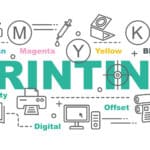How to Improve Your Package Printing
Printing Sells Products. This is the message Anderson & Vreeland has been emphasizing in its marketing communications over the past 12 months. We understand that product packaging represents a critical opportunity to communicate a brand’s message visually, positioning it as a better choice than competing brands.
The packaging is the first thing consumers see when they approach a product of interest. It’s what they see, touch, feel, and review to make their purchase decision. At the same time, product packaging is the final opportunity for marketers to relay the brand’s message and visually convey their product is better than competitors.
Technology is improving the quality of package printing and changing the flexo landscape. It’s also creating production efficiencies, so the demand for flexo continues to grow. A&V has identified converging technologies that are improving package printing and authored a series of trade publication articles, white papers, and hosted webinars as an educational initiative.
Computer-to-Plate (CTP) is one of the technologies that continue to be a driving factor affecting flexo with impressive benefits. CTP can reduce make-ready and waste, reducing raw material, labor, and resources to create the same job vs. film and Imagesetters,
explains Lee Zerfass, Digital Business Manager for Anderson & Vreeland. When you add a workflow, we improve the consistency and speed of how jobs are prepped for press. For higher volume environments, a workflow expedites the time to press, regardless of the operator’s experience level as all jobs are treated the same. For more information, you can download a CTP technology white paper authored by Lee.
The timing is also right for Extended Gamut (EG) flexo, a technology that has been around for over 20 years but has been limited to offset printing due to historic limitations of the flexo printing process. This is all changing due to better presses, plate-making equipment/practices, and color itself.
Extended Gamut flexo can offer improved package printing performance, including printing efficiencies and higher profit margins. Adoption of extended gamut printing is already having a substantial impact on the flexo market,
explains Lee Zerfass. Learn more about the benefits of EG flexo in another white paper authored by Lee.
Digital printing is another technology dramatically affecting package printing. Shorter print runs, more complex package designs, and even variable data for personalized packaging are key benefits of digital printing. You can learn more from an article Lee published in the January issue of Flexo magazine titled “Digital Printing…when to invest.” Lee’s article looks at many factors affecting the adoption of digital printing technology, including inkjet vs. toner, capacity requirements, service agreements, color considerations, and more.
Last but not least, is the increasing role Digital Front Ends play in package printing. Every digital press is a complicated piece of hardware. Digital press vendors have encapsulated the complexities of their software in a single component called the Digital Front End, or DFE.
Anderson & Vreeland is hosting a webinar focusing on the integrated digital front ends, the brains of a digital printing system. This informative webinar will simplify the complexities of digital front ends and factors to be considered with their adoption.
Mark your calendar Wednesday, December 9th. This informative webinar will be available on-demand the day after original airing for those unable to attend the live classes.




